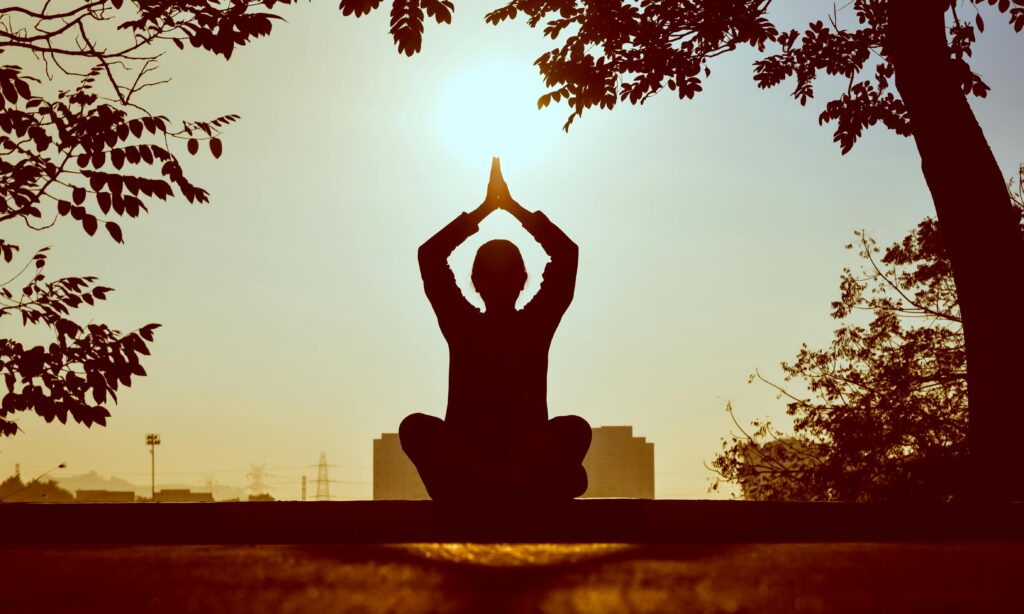
By Emily James: Columnist
Stress in the workplace is a common issue among employees. Stress leads to lower immunity and therefore susceptibility to illnesses and ultimately, time-off. It is no surprise that many employers are turning to ‘workplace wellbeing’ initiatives to reduce the impact of stress on their employees, boost productivity and lead to a thriving workforce.
According to government sources, in 2023/24, stress, anxiety, and depression caused 16.4 million lost working days in the UK.The ‘boom’ of workplace wellbeing according to Yoga Journal, was around twenty-five years ago when top companies began running yoga wellness programmes, for example IBM, Johnson and Johnson and Xerox. These programmes involved supporting employees’ mental and physical health through initiatives such as counseling, on-site fitness facilities and improvements in work-life balance.
Once we feel good in our bodies, we naturally want to connect with others and offer our services from a place of goodness.
More recently, many new companies have introduced such programmes for their employees from Fortune 500 companies to tech start-ups. Employers are increasingly recognising the value that yoga and many other modalities have for reducing stress. Companies such as Nike, Google and Apple have on-site gyms for their employees, offer flexible work patterns and employee benefits such as sabbaticals and mentorship programmes.
Smaller companies may run lunchtime yoga classes while others may collaborate with local studios to receive discounts on passes for their employees. There are also many apps and digital platforms which offer wellbeing support and resources such as Spill, Unmind and MindHug. Smaller companies often offer wellbeing initiatives such as supporting employees with their mental health, fostering a positive workplace culture and flexible working options. Ultimately, practising yoga is just one part of a workplace’s wellbeing programme, however it is a rather cost-effective method of boosting employees’ wellbeing.
What is it that makes yoga so popular as part of these programmes?
Many studies have shown that yoga can improve cognitive function, reduce stress, increase focus, build better immunity and increase camaraderie and connection between employees. It is clear that yoga’s appeal is in the stretching of the tissues, the feeling of working out the body; movement after a day sitting at a desk is exactly the tonic the body needs. However, is there more to this ancient practice than simply stretching?
Yoga’s roots hail from ancient Indian pre-Vedic civilization, over 2000 years ago, in the 3rd Century BCE. One of the main goals of yoga is to still or calm the body and mind in order to meditate and ultimately to reach ‘Samadhi’ or liberation. It could be that the stretching of the muscles can help to lead employees towards a calmer state physically, in order to then focus on the tasks at hand. Once we feel good in our bodies, we naturally want to connect with others and offer our services from a place of goodness.
Continued below…

Follow our Youtube channel. (See broadcasts on arts, culture and lifestyle)
Emily occasionally broadcasts live with Houghton & Mackay over on our Youtube Channel. It is a new and developing service. By subscribing you greatly help the channel reach a wider audience. Click the button below to access.
ARTICLES ON SIMILAR SUBJECTS

It's about tapping in to free energy & focus.
Yoga is a language combining movement, breath, awareness and oneness – we all can benefit from this ancient art and practice. As it says in Patanjali’s Yoga Sutras: ‘find peace and joy within and share the same with all humanity’. Practising yoga is a step closer towards a more peaceful world.
If you’re reading this at work at the moment and would like a few minute refresh, try this ‘mini sequence’ at your desk. Remember to please make sure you have cleared these practices with your GP or health provider. If you feel any discomfort, please pause the practice and return to your natural breath:
🡻
4:4:4:4 breath (Sama Vritti or Box Breathing): begin with taking a few gentle, natural breaths. On your next inhale, count to four, then hold your inhale breath for a count of four, then exhale for four and hold your exhale for a count of four. Practice for three rounds or until you feel suitably more relaxed. This breath balances out the inhale and exhale breath, allowing us to feel more relaxed. When we’re stressed, our inhale tends to be longer than our exhale.
🡻
Wrist circles (Pawanmuktasana): form relaxed fists with your hands. Next, make some gentle circles outwards, and then towards the centre. Try for a few rounds in each direction. Maintain a steady breath as you do this. Loosening our joints can help us to feel calmer and release tension we may be holding in our body.
🡻
Neck stretches: guide your head to your left, then extend your right arm out so that you can feel the stretch along your right side. If you’d like, you may add some gentle movements bringing your chin towards your chest and then back up again. This is a great stretch for anyone working at a computer to relieve any neck tightness.
🡻
Shoulder rolls: bring your shoulders up towards your ears and then exhale guide your shoulders back and down. You may inhale as you lift, and exhale when guiding your shoulders down. You may focus on your upper back, then mid back and then your lower back to loosen any tension or if you tend to hunch your shoulders at your desk. You may do a few rounds rounding your shoulders forwards as well. Try a few rounds each way.
🡻
Spinal twist: place your right hand on the back of your chair, and then your left hand on your right knee. Inhale, lengthen your spine, and then exhale twist to your right, gazing over your right shoulder. Hold for two breaths and then try on the other side.
🡻
Forward fold: inhale raise your arms up to the ceiling, then exhale fold forwards, allowing your upper body to dangle, or you might take hold of your ankles or feet. Slowly roll up. You may do a couple of shoulder rolls afterwards.
🡻
Enjoy your day!

― I'M emily james
columnist
Emily-Rose is an experienced writer and editor, having worked for various blogs, corporate publications and magazines over the years.
Supporting young & beginners
Want to give this writer some extra encouragement?
Support a writer breaking out into the literary industries by donating. 50% of the donation goes to the writer, whilst the other half is used to build and develop the Magazine, providing even more opportunities for people.













